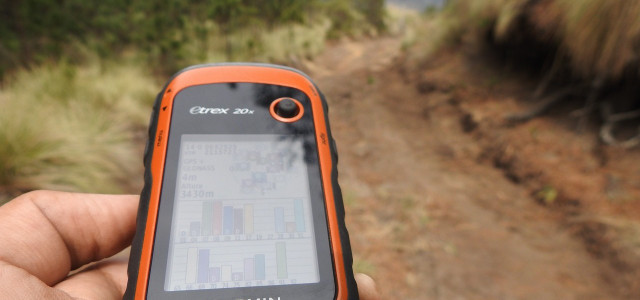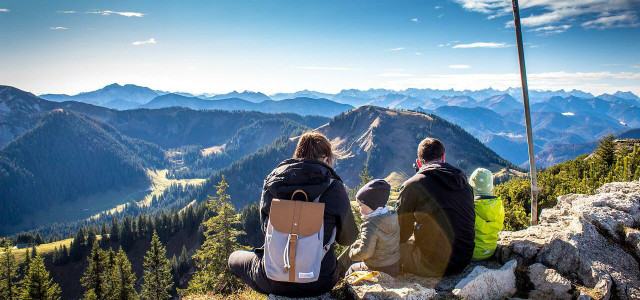Geocaching is a fun outdoor activity for the whole family to enjoy, and it'll take you to new, undiscovered places. Learn more with our guide for geocaching with kids.
Geocaching combines exploring the outdoors with hunting for treasure. Not pirate treasure, but neat little surprises that members of the public have hidden in forests, parks, and on tracks, waiting for you to find them. How do you find geocaches? All you need is the geocaching app on your GPS-enabled smartphone and away you go.
Geocaching is a great activity for kids as they get to experience being outside in nature while having a fun mission to go on. Geocaches are often hidden in unusual, unexpected places such as within a fallen down log, under a rock, or behind an electricity pole — the GPS will pinpoint the location within a few feet, giving kids an idea of the area to hunt in.
The geocaches themselves are waterproof containers of any shape or size. They usually have a message from the person who created them, plus a notebook and pencil for you to record your find and sometimes a small gift for the kids to take away (bring another one along to replace it such as a pencil, eraser, etc.). Once this is done, put the geocache back exactly where you found it, for the next geocachers to find.
This article will discuss why geocaching with kids is the ultimate nature activity and how it can benefit them, plus some tips on how it’s done. Let’s get started.
A Brief History of Geocaching
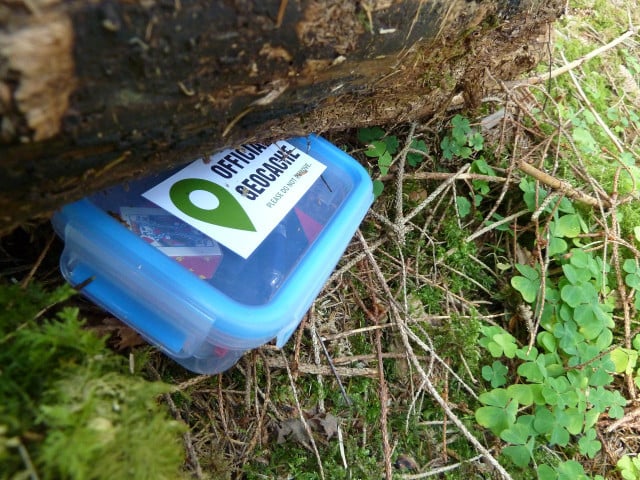


(Foto: CC0 / Pixabay / Settergren)
The term geocaching first appeared in the year 2000, geo refers to nature, and cache refers to a hiding place for important items. Geocaching refers to a kind of real-time outdoor treasure hunt, performed using a GPS-enabled device such as a smartphone. Participants can see the approximate area of the hidden geocache according to the GPS coordinates, they then have to hunt for the carefully hidden item. This is where the fun begins as geocaches have to be hidden well to avoid them being tampered with by members of the public who aren’t geocachers.
Geocaching is a global activity and geocaches can be found all over the world. You may be surprised to find that there is one just down the street from you that you’ve never noticed! Geocaches are always placed outdoors, in public places such as a park, forest, beside a public bench, or even on a busy street. The caches themselves are created by geocachers, or members of the public, they are waterproof containers of varying sizes such as an old camera film container to a small lunch box, so different geocaches have varied levels of difficulty in finding them.
The geocaches themselves always contain a logbook so finders can record their name and when they found the geocache. Larger caches sometimes contain items for kids to take away — participants should bring another small item along to replace it and keep the cache stocked with treasure. Geocaches must be put back exactly where they were found so that the GPS coordinates remain correct for the next geocachers to find.
Benefits of Geocaching With Kids
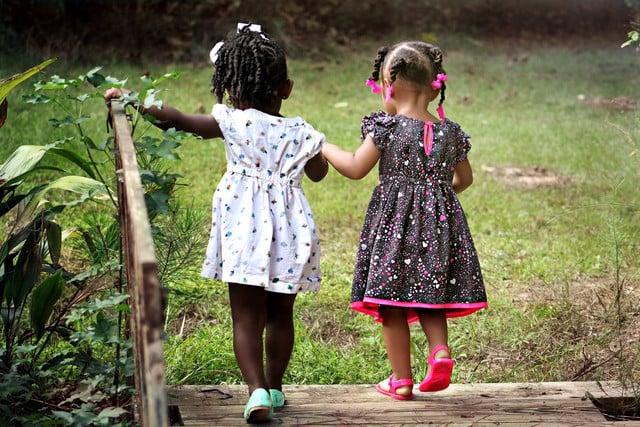


(Foto: CC0 / Pixabay / cherylholt)
Geocaching is a fun activity for the whole family, with multiple benefits for kids:
- Fresh air: Geocaches are only ever hidden in outdoor public places, meaning kids can get lots of fresh air. Geocaching can be done in all seasons and all types of weather, so don’t be afraid of wrapping the kids up on those chilly days and heading out. In fact, being outside in cold weather is healthier for kids than staying indoors due to the good circulation of air — compared to being indoors where bacteria linger and germs are recycled through air vents.
- Exercise: As mentioned before, geocaches are located in outdoor areas such as forests and parks, which means that some walking is required to find them. According to the Centre for Disease Control and Prevention (CDC), kids 6 years of age or older need at least an hour of moderate to vigorous exercise per day, so geocaching can be a way for them to get exercise without even realizing it. Before selecting a geocache to hunt for on the app, you can see the distance from the main road or parking lot, allowing you to choose a geocache that is suitable for your kids’ age and walking abilities.
- Discover new places: One of the benefits of geocaching is that it will bring you to new, undiscovered places in your neighborhood. You can also do it if you go on vacation, a great way to discover unusual places.
- It’s free: All you need is a GPS-enabled device like a smartphone, and there are no charges or sign-up fees.
- Teamwork: Geocaching with kids is fun and adventurous and not only involves problem-solving skills but also encourages kids to work together or with the adults in the group to find the geocache as a team.
How to Geocache With Kids
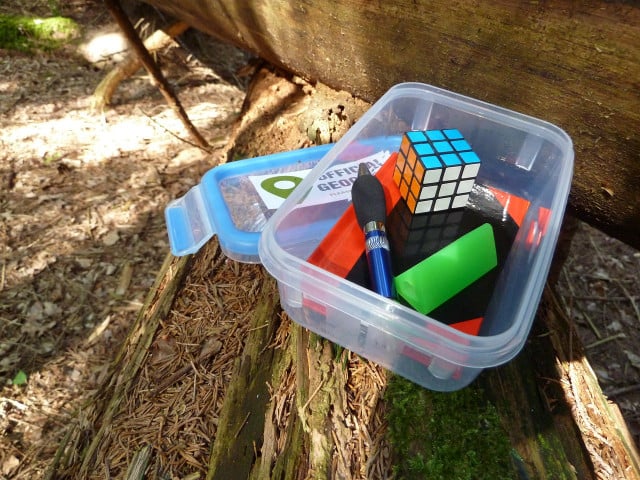


(Foto: CC0 / Pixabay / Settergren)
As with any activity involving kids it is important to be prepared before starting geocaching, check out these tips on how to geocache with kids.
- Download the app: On your GPS-enabled device download the geocaching app and make an account. There is also a premium option that enables access to more caches with higher difficulty levels, for a fee.
- Charge your device: Ensure your device is fully charged before venturing out and consider bringing a power bank as a backup.
- Prepare for the weather: Wrap the kids up if it’s a cold day, or on the other hand, ensure they are protected from the sun by wearing a hat and sunblock. Consider rain boots if you’re heading to a forest area or if it’s been raining recently.
- Bring snacks and drinks: We all know that kids get hungry easily, so to avoid a bunch of moaning about being hungry, bring a backpack of healthy snacks such as homemade trail mix, mixed nuts or fruit, other hiking snacks, and plenty of water.
- Choose an appropriate cache: You can choose a cache based on those nearest to you, or choose a location and see if there are any caches there. Perhaps start with a close one for your first geocache and if you have small kids, consider how far they will be able to walk (and back). Information on the app can be found regarding the terrain, difficulty level, and size of the cache.
- Bring some treasure: Obviously, the most exciting part of geocaching is finding it and then carefully opening it up and seeing what’s inside. Remember to sign the logbook or sheet (bring a pencil in case there isn’t one). Bigger caches may have a gift that the kids can take away like a keyring or some stickers, make sure you bring something similar to replace them, so the next geocachers also can have a gift.
How to Find Geocaches in Your Area
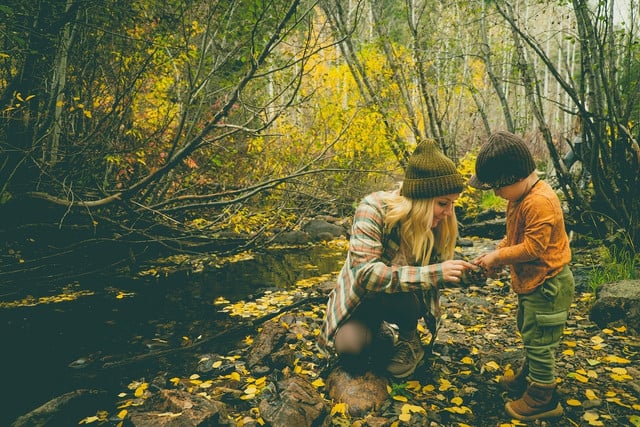


(Foto: CC0 / Pixabay / towillett)
So, now you know what to prepare before geocaching with kids, let’s look at how to geocache in a little more detail.
- Log in: Log in to the app and select the geocache you’re going to find, whether by choosing one close to you, or going to a specific area and choosing one there.
- Click start: When you’re in the location click the start arrow and begin walking, the compass will act as a guide and lead you to the geocache. If you go off course a red arrow will appear, don’t walk too fast, to allow the map to adjust to your walking speed. The app will tell you the direction you’re going in, and how many feet you are from the geocache. It will also show a guideline for the shortest route.
- Zoom in: As you get closer to the geocache, zoom in on the map to help you stay on the right track. When you’re within thirty feet of the geocache a warning signal will sound, so this is the time to start hunting for the geocache.
- Celebrate: Give the kids the chance to celebrate when they find the geocache, the sense of achievement will motivate them to look for more.
- Log your find on the app: As well as manually signing the logbook inside the geocache, remember to do the same on the app. This is also useful for other users as you can leave notes about how difficult it was to find, or whether it is lost or vandalized.
Read more:
- Stop Boredom With These 20 Fun Winter Activities for Kids
- The 8 Best Eco-Friendly Backpacks for Kids and Adults
- 10 Tips on How To Make Camping as a Family a Success
Do you like this post?






